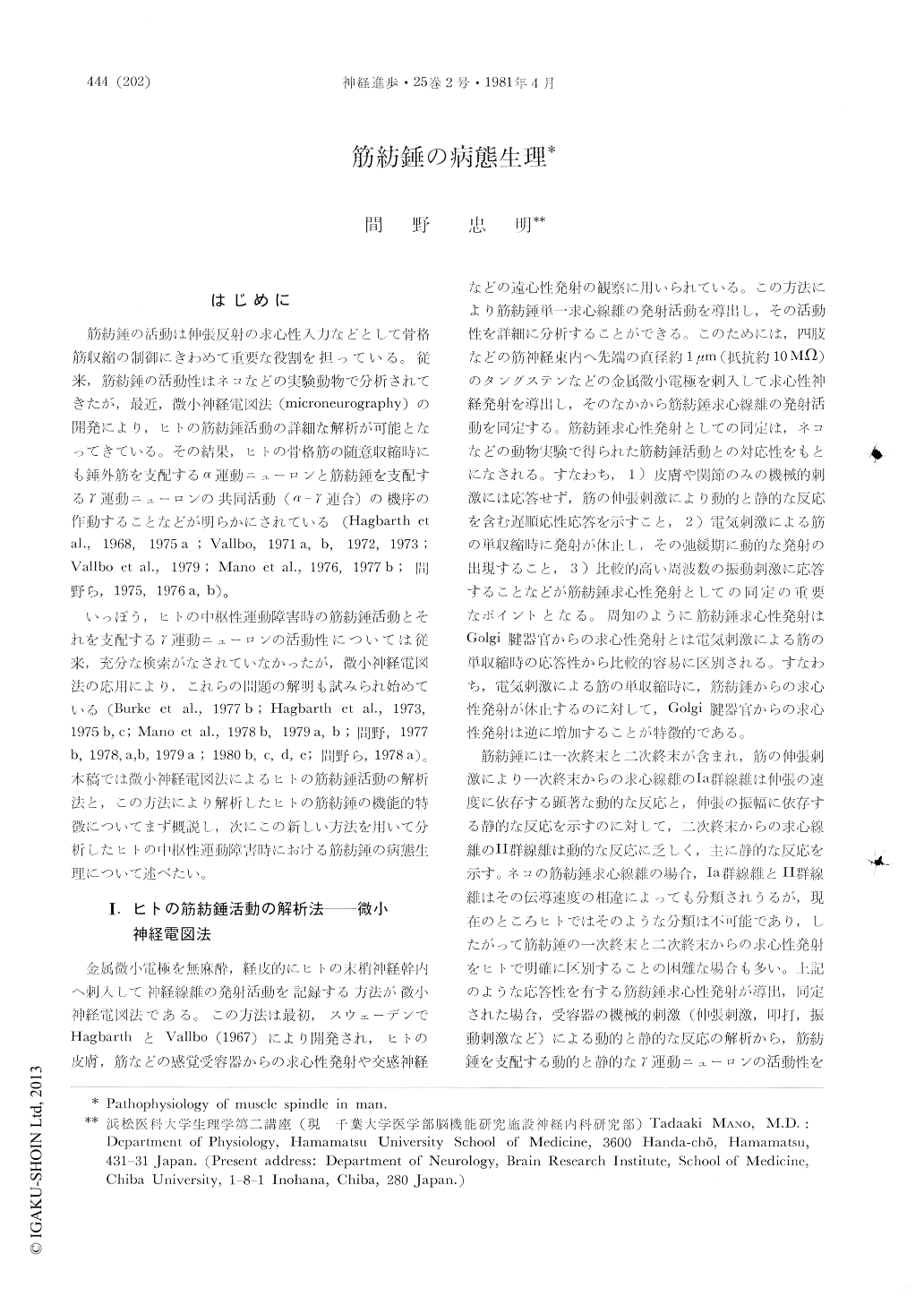Japanese
English
- 有料閲覧
- Abstract 文献概要
- 1ページ目 Look Inside
はじめに
筋紡錘の活動は伸張反射の求心性入力などとして骨格筋収縮の制御にきわめて重要な役割を担っている。従来,筋紡錘の活動性はネコなどの実験動物で分析されてきたが,最近,微小神経電図法(microneurography)の開発により,ヒトの筋紡錘活動の詳細な解析が可能となってきている。その結果,ヒトの骨格筋の随意収縮時にも錘外筋を支配するα運動ニューロンと筋紡錘を支配するγ運動ニューロンの共同活動(α-γ連合)の機序の作動することなどが明らかにされている(Hagbarth etal.,1968,1975 a;Vallbo,1971 a,b,1972,1973;Vallbo et al.,1979;Mano et al.,1976,1977 b;間野ら,1975,1976a,b)。
いっぽう,ヒトの中枢性運動障害時の筋紡錘活動とそれを支配するγ運動ニューロンの活動性については従来,充分な検索がなされていなかったが,微小神経電図法の応用により,これらの問題の解明も試みられ始めている(Burke et al.,1977 b;Hagbarth et al.,1973,1975b,c;Mano et al.,1978 b,1979 a,b;間野,1977b,1978,a,b,1979a;1980b,c,d,e;間野ら,1978a)。
The pathophysiology of muscle spindle system in man has thus far been studied poorly because of methodological difficulties. Meanwhile, recent advances in microneurographic technique have permitted detailed analyses of muscle spindle activities in human subjects. By applying this new method, not only the dynamic and static sensitivities of muscle spindle, but also activities of the dynamic and static motoneurons which innervate muscle spindle can be detected.

Copyright © 1981, Igaku-Shoin Ltd. All rights reserved.


